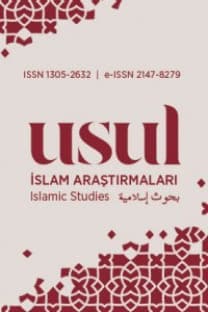Osmanlının Son Yüzyılında Ayasofya Camii Kayyımları
Fatih Sultan Mehmed’in Ayasofya vakfiyesinde camiye hizmet edecek görevliler ve bunların istihdam şekilleri belirlenmişti. Vakfiyede Ayasofya’da vazife yapacak kayyımların sayısı ve alacakları ücretler de tayin edilmişti. Ancak bunların ulu caminin hangi mevkiinde görevlendirilecekleri tasrih edilmemişti. İlerleyen zaman diliminde ise kayyımların külliyedeki görev mahallerinin kendilerine verilen vazife beratlarında açıklandığını görmekteyiz. Ayasofya’da çalışan kayyımlar, Osmanlı idarecilerinden gördükleri ilgi sebebiyle diğer cami kayyımlarından ayrılıyorlardı. Yazdıkları arzuhaller padişahlara kadar ulaşıyor ve talepleri genellikle yerine getiriliyordu. Bu talep bazen emektar bir kayyım için yeni bir evin satın alınması şeklinde olabildiği gibi, bazen de yapacakları yeni bir ev için onlara maddi destek vermek şeklinde de olabiliyordu. Ayasofya kayyımlarına camideki diğer çalışanlarla birlikte yüzlerce yıl mutat olarak verilmiş özel bir Osmanlı yemeği olan fodulanın Osmanlının son zamanlarında kesildiğini görmekteyiz. 1909 yılında Ayasofya ve Sultan Ahmed Camii kayyımları, gördükleri saygınlığa gölge düşürecek bir işgüzarlık ve fırsatçılık örneğiyle gündeme gelirler. Kayyımlar tarafından Ayasofya ve Sultan Ahmed Camii’lerini ziyaret eden ecnebilerden ücret talep edilmesi, payitahtta daha önce görülmemiş bir uygulamaydı.
Anahtar Kelimeler:
Osmanlı Devleti, Ayasofya, Kayyım, Fodula
Trustees of the Hagia Sophia Mosque in the Last Century of the Ottoman Empire
The officials who would serve the mosque and their employment methods were determined in Fatih Sultan Mehmed’s endowment deed of the Hagia Sophia. The number of the trustees who would serve at Hagia Sophia and the fees they would receive were also determined in the endowment deed. However, the positions in which they would serve at the grand mosque, were not manifested. In the following periods, we see that the duty areas of the trustees in the complex were described in the duty letters that were given to them. The trustees working at Hagia Sophia were distinguished from other mosque trustees due to the interest they drew from the Ottoman administrators. The petitions they wrote would reach the sultans and their requests were generally fulfilled. The requests could sometimes be in the form of purchasing a new house for a veteran trustee, or other times in the form of financial support for a new house that they would build. We see that the serving of the fodula, a special Ottoman dish that was given customarily to the Hagia Sophia trustees along with the other employees of the mosque for hundreds of years, was ceased in the later periods of the Ottoman. In 1909, the trustees of Hagia Sophia and Sultan Ahmed Mosques caught particular attention owing to an example of officious and corrupt incident which would undermine their reputation. The request of fees from foreigners who visited the Hagia Sophia and Sultan Ahmed Mosques by the trustees was an unprecedented practice in the capital city.
Keywords:
Ottoman Empire, Hagia Sophia, Trustee, Fodula,
___
- Kandemir, İsmail. Ulu Mabed Ayasofya, İstanbul: Cadde Kültür Kitabevi, 2004.
- Yazıcı, Tahsin-Mehmet İpşirli. “Ferrâş”. Türkiye Diyanet Vakfı İslâm Ansiklopedisi, 12: 408-409. İstanbul: TDV Yayınları, 1995.
- Yılmaz, Hüseyin. Ayasofya, İstanbul: Timaş Yayınları, 1991.
- ISSN: 1305-2632
- Başlangıç: 2004
- Yayıncı: İSTANBUL SABAHATTİN ZAİM ÜNİVERSİTESİ
Sayıdaki Diğer Makaleler
Tazmin Yükümlülüğü Üstlenilmeyen Şeyden Kâr Elde Edilmesi
Osmanlının Son Yüzyılında Ayasofya Camii Kayyımları
Kadızâde Mehmed Efendi’nin Cevâhiru’l-İslâm Adlı Eseri ve Bu Eserdeki İtikadî Görüşlerinin Tahlili
Hadis Karşıtları Ne Yapmak İstiyor
Memlükler'deki Ağır Teşhir Cezalarının Fıkhî Olarak Konumlandırılması
Hilâfet Yönetim Sisteminde Halifenin Göreve Gelmesinde Seçimin Yeri -Ehlü’l-Hall ve’l-Akd Modeli-
Mâide Suresi 93. Ayetin Müşkilu'l-Kur'ân Açısından Değerlendirilmesi
Adalet Prensibi, İnsan ve Toplum Üzerindeki Yansımaları: Mâtürîdî Örneği
